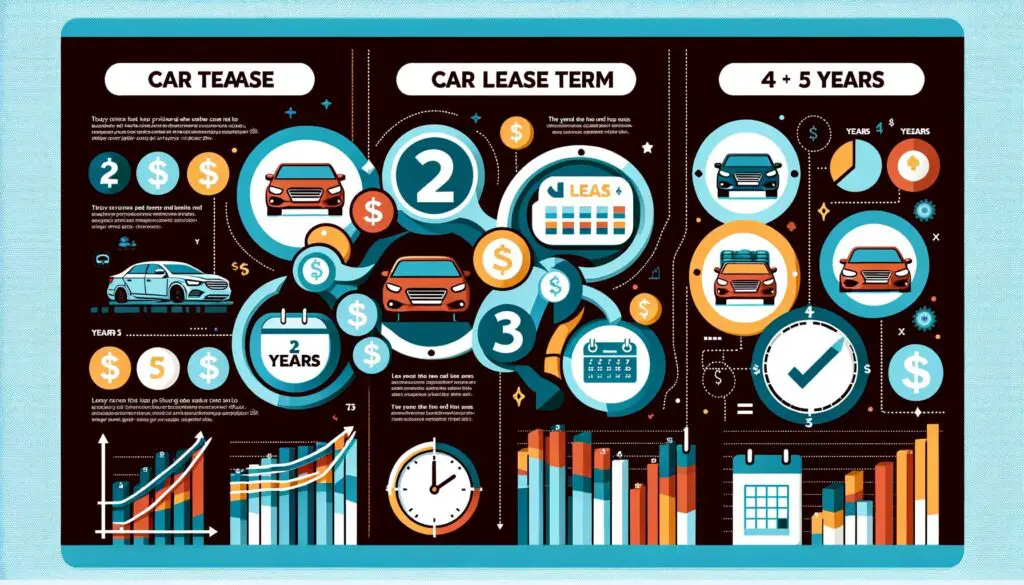In the realm of automotive decisions, choosing the optimal lease length can significantly impact your financial health and driving satisfaction. This comprehensive guide aims to unravel the complexities surrounding lease durations, empowering you to make informed decisions tailored to your needs.
Overview of Car Leasing
Car leasing offers a compelling alternative to traditional ownership, providing flexibility and affordability for drivers. Unlike purchasing a vehicle outright, leasing allows individuals to use a car for a set period while making monthly payments.
Benefits of Leasing a Car
Leasing a car presents several advantages, including lower monthly payments, minimal upfront costs, and the opportunity to drive a newer vehicle more frequently. Additionally, leasing often covers maintenance and warranty expenses, offering peace of mind to lessees.
Understanding Car Leases
A car lease involves a contractual agreement between the lessee (driver) and lessor (leasing company). Unlike buying a car, where ownership transfers upon payment, leasing entails renting the vehicle for a specified period, typically three to four years.
Key Factors in Deciding Lease Length
When determining the ideal lease duration, several factors warrant consideration, including financial constraints, driving habits, and long-term plans. Understanding these variables is crucial for selecting a lease term that aligns with your needs and preferences.
Short-Term Leases: Pros and Cons
Two-Year Leases
Opting for a two-year lease offers the allure of driving a new car more frequently, avoiding long-term commitments, and minimizing repair costs due to warranty coverage. However, shorter lease terms often result in higher monthly payments and limited mileage allowances.
Standard Three-Year Leases: A Deeper Look
Selecting a three-year lease provides a balance between affordability and stability. With a longer term, lessees enjoy lower monthly payments, ample time to enjoy the vehicle, and greater flexibility in customization options. Nonetheless, committing to a three-year lease necessitates careful consideration of future needs and potential lifestyle changes.
The Four-Year Lease: An Uncommon Choice
While less common, a four-year lease may appeal to individuals seeking extended ownership-like benefits without the long-term commitment. This option offers lower monthly payments than shorter terms and allows lessees to amortize upfront costs over a more extended period. However, it’s essential to evaluate the vehicle’s depreciation and warranty coverage to ensure a favorable outcome.
Mileage Considerations in Lease Terms
Impact of Mileage on Lease Decisions
Mileage plays a pivotal role in lease agreements, influencing monthly payments, end-of-lease charges, and resale value. Lessees must accurately assess their driving habits and select a mileage allowance that aligns with their anticipated usage to avoid costly penalties.
Calculating Your Mileage Needs
Before finalizing a lease agreement, it’s crucial to estimate your annual mileage to avoid exceeding contractual limits. Utilizing historical data and future projections can help determine the appropriate mileage allowance, ensuring a seamless leasing experience.
Financial Implications of Different Lease Lengths
Cost Comparison: 2-Year vs 3-Year Leases
Analyzing the financial implications of various lease terms is essential for optimizing affordability and value. While shorter leases may offer greater flexibility, longer terms often result in lower monthly payments and reduced depreciation costs over time.
Long-Term Financial Impact of Lease Terms
Considering the long-term financial ramifications of lease terms is paramount for budget-conscious consumers. By evaluating total lease costs, depreciation rates, and resale values, individuals can make informed decisions that align with their financial goals and lifestyle preferences.
Warranty Coverage and Lease Duration
How Warranty Aligns with Different Lease Terms
Warranty coverage plays a vital role in mitigating maintenance and repair expenses throughout the lease duration. Longer lease terms often coincide with comprehensive warranty protections, providing peace of mind to lessees and minimizing out-of-pocket costs.
The Importance of Warranty in Lease Decisions
When evaluating lease options, it’s crucial to prioritize vehicles with robust warranty coverage to safeguard against unforeseen repairs and mechanical issues. Leasing a car with an extensive warranty ensures reliable performance and enhances overall satisfaction throughout the lease term.
Changing Cars: Flexibility in Lease Terms
Swapping Cars Mid-Lease
Lessees seeking greater flexibility may explore options for swapping cars mid-lease, allowing for upgrades or adjustments to better suit their evolving needs. While this option may incur additional fees or administrative hurdles, it offers unparalleled flexibility for drivers seeking a dynamic leasing experience.
Lease Transfer Options
Transferring a lease to another party can provide relief for individuals facing unexpected life changes or financial constraints. Lease transfer programs enable lessees to transfer their contractual obligations to a new lessee, freeing them from future lease payments and responsibilities.
End-of-Lease Options and Responsibilities
Buyout Options at the End of the Lease
Upon reaching the end of the lease term, lessees are presented with various options, including purchasing the vehicle outright. Evaluating buyout options involves considering the vehicle’s residual value, market conditions, and personal preferences to determine the most advantageous course of action.
Returning the Car: What to Expect
Returning a leased vehicle entails complying with lease-end requirements, including mileage restrictions, wear-and-tear assessments, and potential excess charges. Understanding the return process and addressing any outstanding obligations is essential for a seamless transition at lease end.
Lease Agreements: Key Clauses to Consider
Understanding the Fine Print in Lease Contracts
Reviewing lease agreements thoroughly is imperative for identifying key clauses and potential obligations. Paying close attention to terms related to mileage allowances, maintenance responsibilities, and end-of-lease options can prevent misunderstandings and disputes down the road.
Negotiating Lease Terms
Engaging in lease negotiations empowers consumers to secure favorable terms and conditions tailored to their needs. Whether negotiating monthly payments, mileage allowances, or lease-end options, advocating for favorable terms can result in a more satisfying leasing experience.
How Depreciation Affects Lease Length
Depreciation Curve of New Cars
Understanding the depreciation curve of new cars is essential for gauging the optimal lease length and minimizing financial exposure. New vehicles experience rapid depreciation during the initial years of ownership, making shorter lease terms more appealing for cost-conscious consumers.
Optimal Lease Length to Minimize Depreciation Impact
Selecting the right lease length can mitigate the adverse effects of depreciation, preserving equity and minimizing financial losses. By aligning lease terms with the vehicle’s depreciation curve, lessees can maximize value and enjoy a more cost-effective leasing experience.
Maintenance and Repair Considerations
Maintenance Responsibilities in Different Lease Lengths
Clarifying maintenance responsibilities is crucial for maintaining the vehicle’s condition and complying with lease agreements. While shorter leases may include comprehensive maintenance coverage, longer terms necessitate diligent upkeep to preserve the vehicle’s value and performance.
Cost of Repairs and Lease Term Alignment
Anticipating repair costs and aligning them with the lease term is essential for budgeting and financial planning. Longer lease terms may expose lessees to increased repair expenses as the vehicle ages, underscoring the importance of proactive maintenance and warranty coverage.
Insurance Implications for Different Lease Lengths
Insurance Requirements for Leased Vehicles
Insurance requirements for leased vehicles vary depending on the lessor’s stipulations and state regulations. Lessees are typically required to carry comprehensive insurance coverage to protect against theft, accidents, and liability, ensuring adequate protection throughout the lease term.
How Lease Term Affects Insurance Rates
Lease terms can influence insurance rates, with longer terms often resulting in higher premiums due to increased exposure and depreciation risks. Understanding the relationship between lease length and insurance costs is essential for budgeting and selecting the most cost-effective coverage options.
Customizing Your Lease: Options and Upgrades
Customization Possibilities in Car Leases
Exploring customization options allows lessees to personalize their driving experience and enhance the vehicle’s features and functionality. From cosmetic upgrades to performance enhancements, customization offers endless possibilities for tailoring the lease to meet individual preferences.
Impact of Customizations on Lease Terms and Costs
While customization can enhance the driving experience, it’s essential to consider its impact on lease terms and costs. Certain modifications may void warranty coverage or incur additional fees, necessitating careful consideration and consultation with the lessor before proceeding.
The Future of Car Leasing
Trends in Car Leasing
The landscape of car leasing is evolving rapidly, driven by technological advancements, shifting consumer preferences, and emerging mobility solutions. Keeping abreast of industry trends and innovations is essential for anticipating future developments and adapting lease strategies accordingly.
How Future Automotive Advancements Might Influence Lease Terms
Advancements in automotive technology, such as electric vehicles, autonomous driving, and shared mobility, are poised to reshape the leasing landscape in the coming years. Embracing these innovations and anticipating their impact on lease terms can position consumers for success in a rapidly evolving market.
Frequently Asked Questions (FAQs)
What Happens if I Exceed the Mileage Limit on My Lease?
Exceeding the mileage limit on your lease can result in hefty penalties at lease end, typically charged on a per-mile basis. To avoid excess charges, it’s essential to monitor your mileage closely and consider purchasing additional mileage upfront or negotiating a higher allowance.
Can I Buy the Car at the End of the Lease?
Yes, most lease agreements offer the option to purchase the vehicle at the end of the lease term, subject to predetermined buyout terms and conditions. Evaluating buyout options involves considering the vehicle’s residual value, market conditions, and personal preferences to determine the most advantageous course of action.
How Do I Avoid Excess Wear and Tear Charges?
To minimize excess wear and tear charges, it’s essential to maintain the vehicle diligently throughout the lease term, addressing any cosmetic or mechanical issues promptly. Additionally, scheduling regular inspections and adhering to lease-end guidelines can help mitigate potential charges and ensure a smooth return process.
Is It Possible to Extend a Car Lease?
Yes, some leasing companies offer options for extending a car lease beyond the initial term, allowing lessees to retain possession of the vehicle for an additional period. Extending a lease may involve renegotiating terms and conditions, including monthly payments, mileage allowances, and lease-end obligations.
What Are the Hidden Costs in a Car Lease?
Hidden costs in a car lease may include excess mileage charges, wear and tear fees, disposition fees, and early termination penalties. Reviewing the lease agreement carefully and clarifying any potential charges upfront can help mitigate surprises and ensure transparency throughout the leasing process.
Car leases under $200 a month no money down ?
Conclusion
In conclusion, selecting the optimal lease length requires careful consideration of various factors, including financial constraints, driving habits, and long-term plans. By understanding the nuances of lease terms, evaluating potential risks and benefits, and making informed decisions, consumers can navigate the lease lifespan with confidence and clarity. Whether opting for a short-term lease for flexibility or a longer-term commitment for stability, choosing the right lease length is essential for maximizing value and driving satisfaction.









